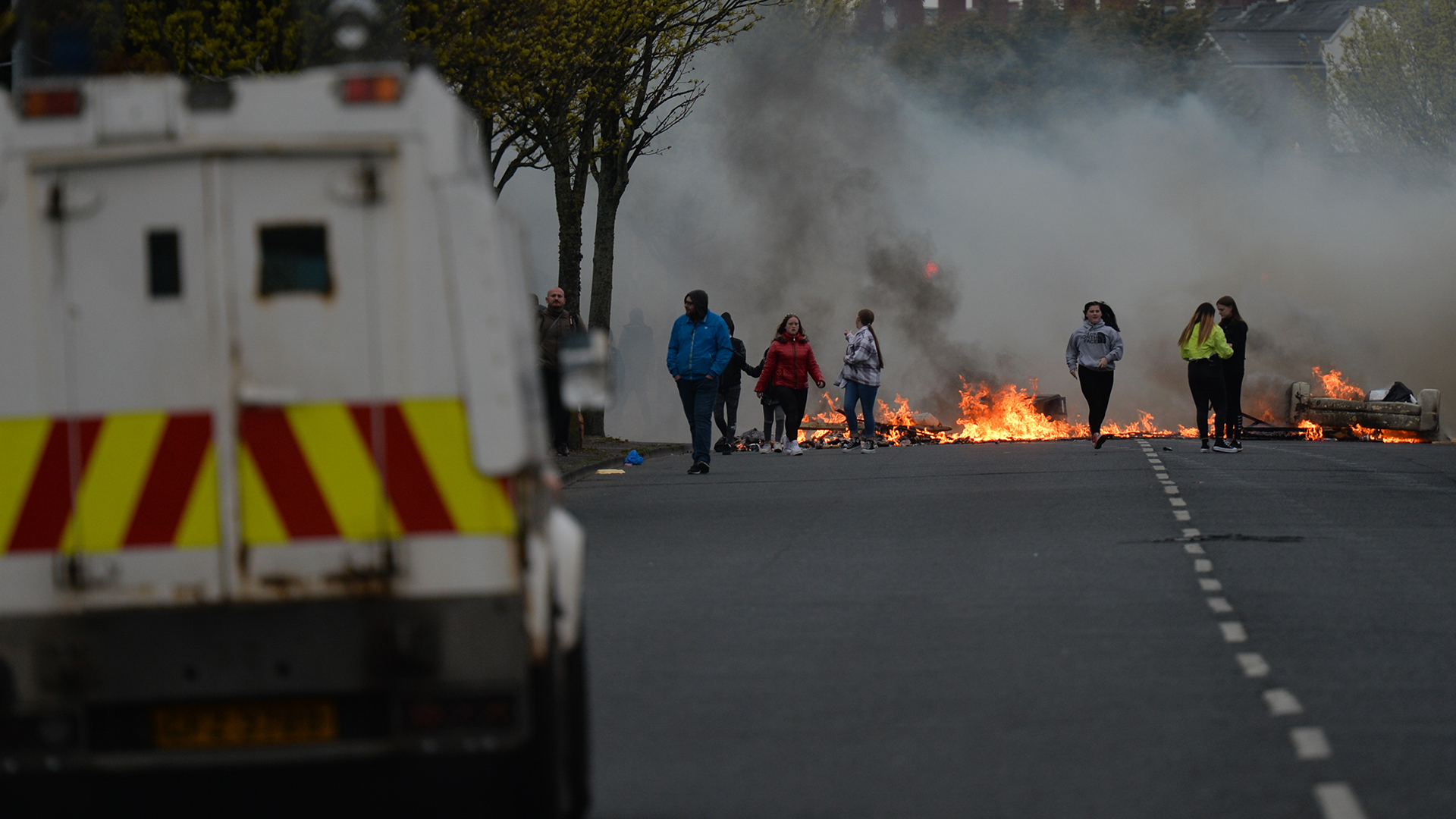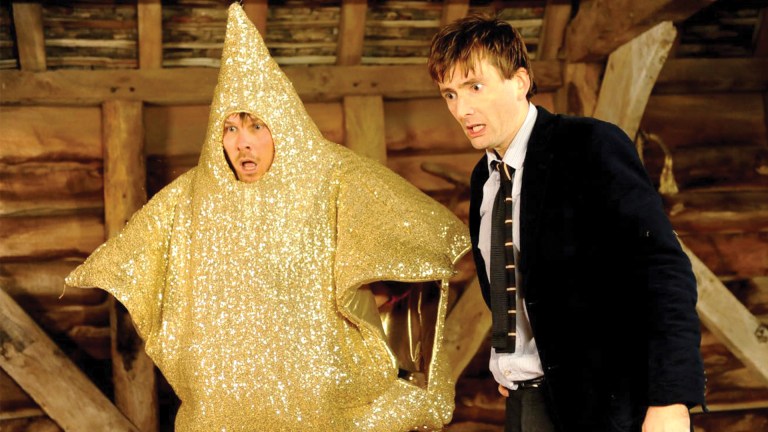Not everyone will be coming to the centenary celebrations. Some are excited and will be proud to attend. But others are still dismayed. Lots feel stuck in between. Northern Ireland is not OK.
It is interesting to take the partition of Ireland in 1921 as a snapshot in time, to help understand today’s instability. Because it was a moment of seismic political change, where ‘two sides’ can be visualised. Of course, ‘two sides’ is also a deeply flawed concept. But it is useful to sketch out the myth while also deconstructing it.
The island of Ireland was historically settled by Iron Age Celts, early Christians, Normans and Vikings. They all fought for resources in the usual ways. But when Britain embarked on the Plantation of Ireland in the 16th and 17th centuries, things changed.
Land was confiscated and given, occasionally sold, to English landlords. They, in turn, brought over Scottish and English tenants. This displaced many Irish natives.
In reality, locals and newcomers often mingled, fell in love and had babies. The ‘two sides’ weren’t homogenous.
But a colonial fault line was drawn in society, and we still feel its tremors today.
Advertising helps fund Big Issue’s mission to end poverty
The ‘Glorious Revolution’ is in British history books. It rippled violently through Ireland too. After fending off Catholic King James II in the 1689 Siege of Derry, the Protestant king, William III of Orange, wanted to restrict Catholics’ power in Ireland.
Penal Laws were introduced, which barred Catholics from higher education, practising law and long leases on land. An oath to the British monarchy was required to vote or take public office.
The Penal Laws also applied to Protestant dissenters (non-Anglicans), again revealing the nonsense of ‘two sides’. Catholics and Protestant dissenters joined forces in the United Irishmen. They launched a rebellion for Irish independence in 1798, and were spectacularly crushed by British militia. This saw anti-sectarian politics retreat to the cultural underground, where it has dwelt ever since.
In the following years, Irish and English elites came to co-exist less explosively. The Act of Union in 1800 formalised the relationship. Ireland slowly and steadily eked out more autonomy. But Britain was always the alpha, and often ruled carelessly.
This was most evident in times of crisis. During the Great Hunger, the London government exported Irish-grown grain while many locals starved, emigrated or died. A lot of Irish people still baulk at the word ‘famine’.
And so these deep undercurrents, and further periods of intense violent rebellion – the Easter Rising in 1916 and the War of Independence from 1919-21 – ultimately led to the formation of the Irish Republic. To the creation of Northern Ireland in 1921. And to our fraught centenary today.
Advertising helps fund Big Issue’s mission to end poverty
Northern Ireland centenary: Shaky union, frail devolution
The partition of Ireland landed with different communities in different ways. Most unionists and loyalists (by and large Protestants) had wanted all of Ireland to remain in the Union with Britain. The six-county Northern Ireland was a consolation prize.
But this ended up having benefits. The Protestant majority in Northern Ireland was massive. Deliberately wiggly electoral lines ensured unionist government for a long time. There were jobs for the boys in Belfast’s thriving industrial economy.
The symbolism of Northern Ireland was British, and many felt at home with this. Many Protestants were proud of their contributions during the world wars (as were some Catholics) and felt emotionally connected to Britain, especially the monarchy.
Irish nationalists and republicans (by and large Catholics) experienced partition very differently. As a severing. A scar on the island. People in the Republic of Ireland set about building a new state. Sporadic attempts to take back the north never made headway. And, over time, people thought less and less about their northern brethren.
But Catholics in Northern Ireland could not move on. The cards were politically and economically stacked against them. Despite appreciating – and staffing – brilliant British inventions like the NHS, many Catholics (and some Protestants) could not feel comfortable in a unionist Northern Ireland which refused to share its state apparatus or symbolism.
Some denied its legitimacy, and refuse to say the words ‘Northern Ireland’ still.
Advertising helps fund Big Issue’s mission to end poverty
Pent-up frustration at these inequalities eventually led to the Troubles from 1969–1998, with the IRA, UVF and UDA and British state using different strategies to achieve their goals. A predictable, yet preventable, vortex of violence.
Most people kept their heads down and tried to stay safe. A dual existence perfectly captured in Derry Girls.
And so, in all of these ways Britain, Ireland, Northern Ireland are umbilically tangled.
But how does this relate to riots in 2021? To our awkward centenary?
Peacetime Northern Ireland was glued together by the EU’s borderlessness. Brexit swept away that delicate stability
In short, although Northern Ireland had a peace agreement in 1998, we never really stopped carrying the weight of these histories. The Good Friday Agreement mostly took the guns out of politics. It got the ‘two sides’ in the same room. But it did not lead to any deep understanding of one another’s pain. In fact, we designed a whole new political system based around these ‘two sides’. We propped division up, and stifled voices outside and between.
All throughout these histories, many people never fully identified with any ‘side’. Our daily lives have often mingled, with friendships, social activities – and Tinder dates – criss-crossing divides. Currently, two fifths of people in Northern Ireland identify as neither unionist or nationalist. What did happen though, is that our peace process focused on building new and shiny things, rather than dealing with our heavy history. It was hoped that we could perhaps shop our way to a more cosmopolitan existence.
Advertising helps fund Big Issue’s mission to end poverty
But the spoils of peace never filtered down to the margins. Austerity, then Covid, stripped away the shiny facade. And left us staring at the cold, jutting bones of it. That people in Northern Ireland have the lowest incomes in the UK before housing costs. That we are 3,000 times more likely than people in England to wait over a year for a hospital appointment. That paramilitary gangs are still active. That our power-sharing devolution barely functions.
And of course Brexit was the last thing we needed. Northern Ireland did not feature much in pre-Brexit debates, which were largely led by English nationalism. And after the vote, it was too late. Peacetime Northern Ireland was glued together by the EU’s borderlessness. Brexit swept away that delicate stability.
Northern Ireland voted 56 per cent to remain. Despite this, the unionist DUP, which had a confidence and supply arrangement with the Conservative government in Westminster from 2017-2019, pushed for the hardest Brexit possible. This remains inexplicable to most observers. Because it only did the Union harm.
Boris Johnson repeatedly promised unionists and loyalists that there would never be a border in the Irish Sea. This was not true, once again sending Northern Ireland into a tailspin. It was the spark that lit the recent loyalist protests.
People in Northern Ireland are just like people anywhere else. We want food, shelter, safety, a little happiness, a cup of tea made the way we like it. Politically, we have different preferences on the Union and Irish unity. But mostly we want functioning democracy.
Whatever happens in the future, Britain and Northern Ireland will remain deeply connected. Unionists and loyalists, despite their feelings of betrayal, have a strong emotional bond to the UK. Their British identities are here to stay. The television we watch, the football teams we support, where our relatives live – most of our lives are entwined with Britain, whatever our politics.
Advertising helps fund Big Issue’s mission to end poverty
But Northern Ireland might not be in the UK forever. The Union looks shaky. Our devolution is frail. Ultimately, the British Secretary of State will decide whether to grant or deny a referendum on Irish unity. The result may be close. Either way, Britain must work out how to craft a healthy future relationship with the island of Ireland.
Northern Ireland 100 years on is a beautiful, resilient, angry and passionate place. But we are not OK. And we need Britain to rise to this challenge.
Northern Ireland begins to mark its centenary on May 3. Claire Mitchell is a writer and researcher from Belfast. @mrstooth









